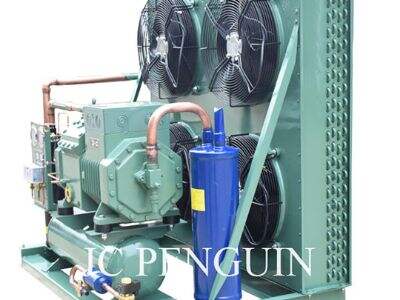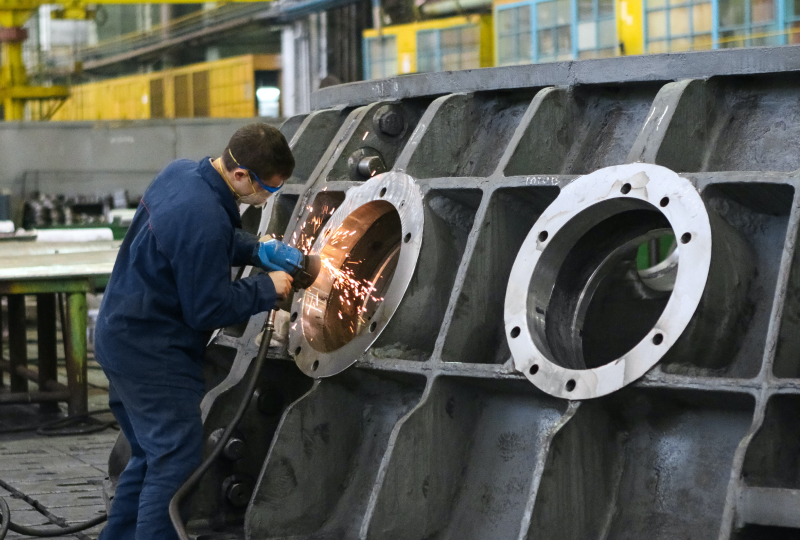Wenn Sie sich schon immer gefragt haben, wie Ihr Kühlschrank Ihre Lebensmittel kalt halten oder wie ein Klimagerät Ihr Zuhause an einem heißen Tag abkühlen kann, dann haben Sie dem Prozess zu verdanken, der als Wärmeübertragung bekannt ist. Wärmeübertragung ist der Übergang von Wärme von einem Objekt auf ein anderes. Die Oberfläche ist eine entscheidende Komponente bei dem Prozess des Wärmeaustauschs – und ist unter anderem der Grund dafür, dass Maschinen wie Kondensatoren ihre Arbeit so effektiv verrichten.
Was ist ein Kondensator?
Sprechen wir über Kondensatoren. Ein Kondensator ist ein Gerät, das Gas durch Kühlung in Flüssigkeit umwandelt. Dabei wird Wärme abgegeben, weshalb Sie die Luft hinter Ihrem Kühlschrank oder Klimagerät spüren werden.
Die Effektivität der Funktionsweise eines Kondensators hängt wirklich von seiner Fähigkeit ab, Wärme zu übertragen. Ein bedeutender Vorteil besteht darin, wie viel Oberfläche zur Verfügung steht. Einfach ausgedrückt: Je größer die Oberfläche eines Kondensators ist, desto mehr Wärme kann er transportieren und desto effektiver wird die Kühlung des Gases sein.
Die Rolle der Oberfläche dabei, Kondensatoren effektiver zu machen
Stellen Sie sich vor, Sie haben einen kleinen Kondensator und einen großen Kondensator. Wenn Sie Gas durch beide hindurchdrücken, kühlt der große Kondensator Ihr Gas besser. Das liegt daran, dass die größere Oberfläche es dem Gas ermöglicht, mit mehr kühlendem Material in Kontakt zu kommen, wodurch die Wärme schneller abgeführt wird.
Verbesserung der Kondensatorleistung
Um einen Kondensator so effizient wie möglich arbeiten zu lassen, versuchen Ingenieure, möglichst viel Oberfläche unterzubringen. Eine Möglichkeit, dies zu erreichen, besteht darin, die Anzahl der Lamellen oder Spulen am Kondensator zu erhöhen oder Materialien zu verwenden, die Wärme effektiver übertragen können.
Wenn Ingenieure das Oberflächendesign verbessern können, könnten Kondensatoren effizienter arbeiten, Energie und Geld sparen. Dies ist auch gut für die Umwelt und Ihren Geldbeutel!
Die Auswirkungen der Oberfläche auf die Leistung
Nun, wie hilft die Oberfläche einem Kondensator? Stellen Sie sich die Oberfläche als Spielplatz für Wärme vor. Elemente mit mehr Platz zum Spielen (oder einer größeren Oberfläche) können mehr Wärme bewegen, sodass das Gas schneller abkühlen kann.
Kondensatoren effizient halten
Die Verwaltung der Wärmeaustauschfläche ist entscheidend, um Kondensatoren bei der ordnungsgemäßen Leistung zu unterstützen. Dies bedeutet, dass die Oberfläche sauber und frei von allem sein muss, was die freie Wärmeübertragung behindern könnte. Zudem kann ein gutes Wärmeaustauschmaterial den Kondensator noch besser machen.
Das Tun solcher Maßnahmen hängt also sehr von der Oberfläche eines Kondensators ab. Ingenieure wasserkondensator die verstehen, wie die Oberfläche beim Wärmeaustausch hilft, können überlegene Kühlsysteme entwickeln, die sowohl leistungsfähig als auch energieeffizient sind. Das nächste Mal, wenn Sie etwas Kaltes aus dem Kühlschrank trinken oder von der Klimaanlage gekühlt werden, denken Sie einfach daran, wie etwas Ähnliches gerade auch Ihnen widerfährt!

 AR
AR
 FR
FR
 DE
DE
 JA
JA
 KO
KO
 PL
PL
 PT
PT
 RU
RU
 ES
ES
 TL
TL
 ID
ID
 VI
VI
 TH
TH
 TR
TR
 MS
MS
 BN
BN
 LO
LO
 MN
MN
 MY
MY
 KK
KK
 TG
TG
 UZ
UZ
 KY
KY




